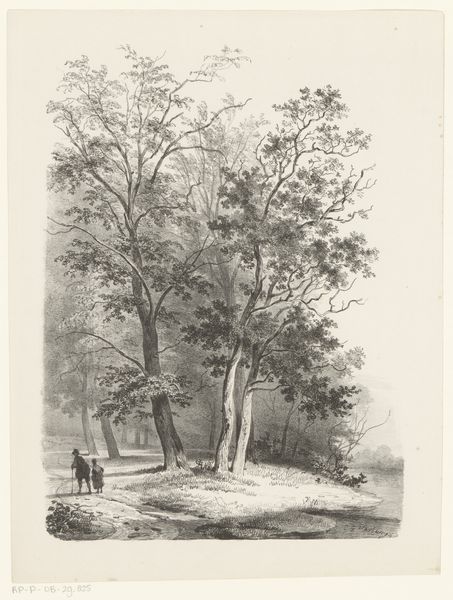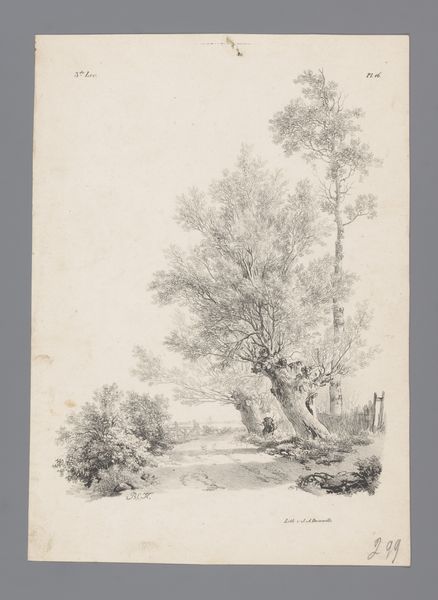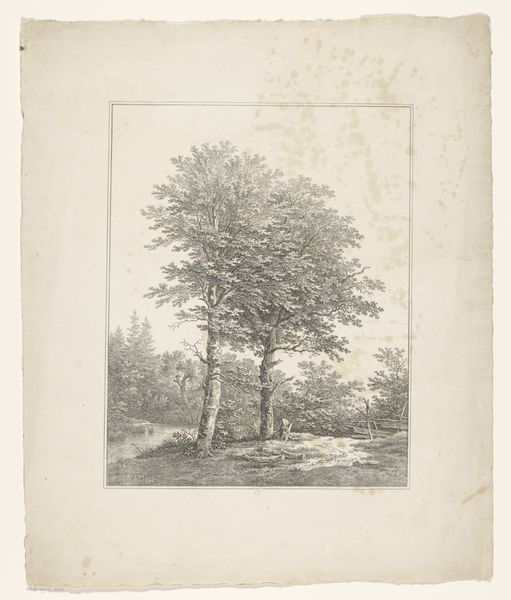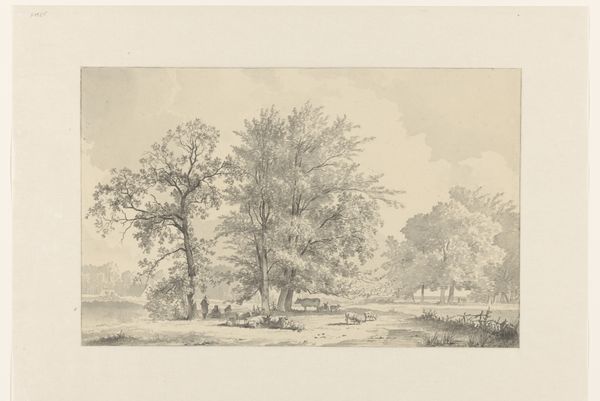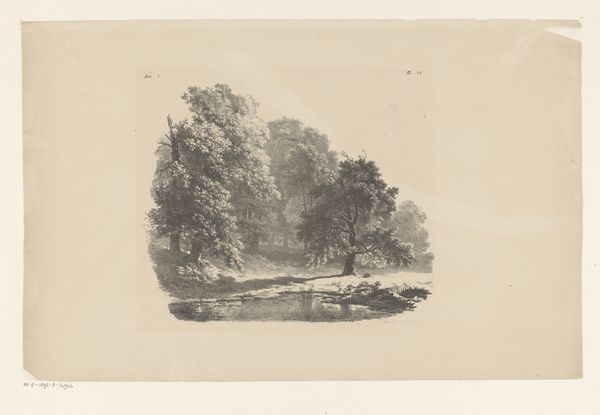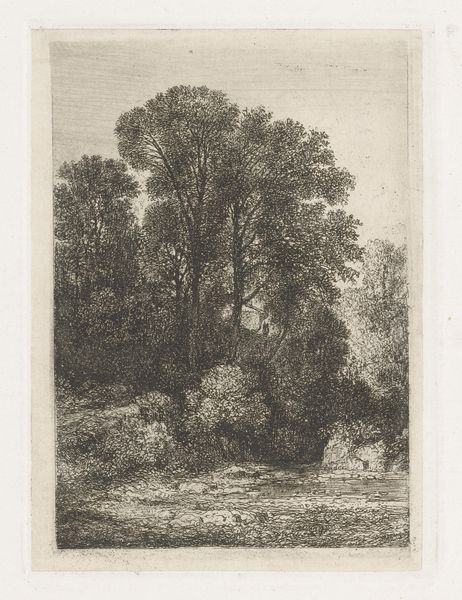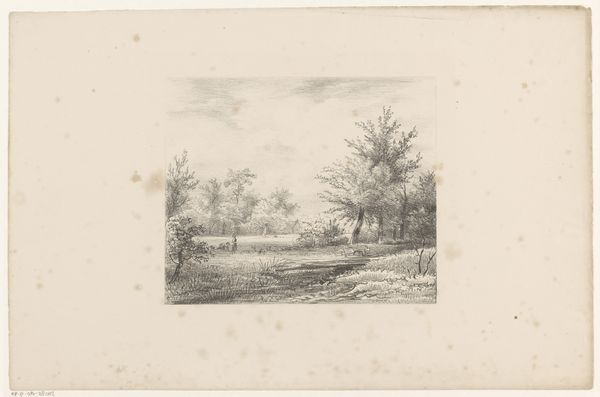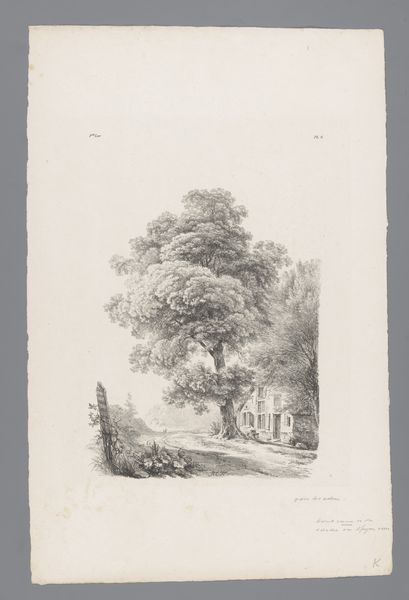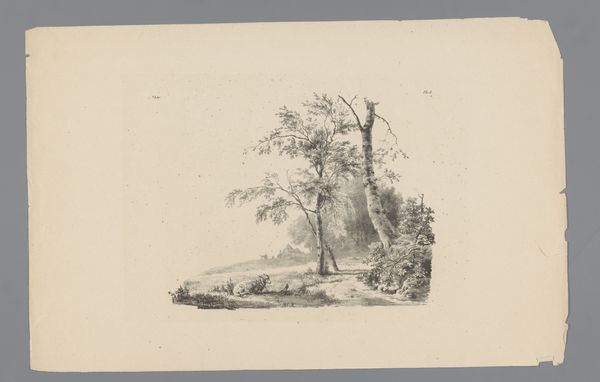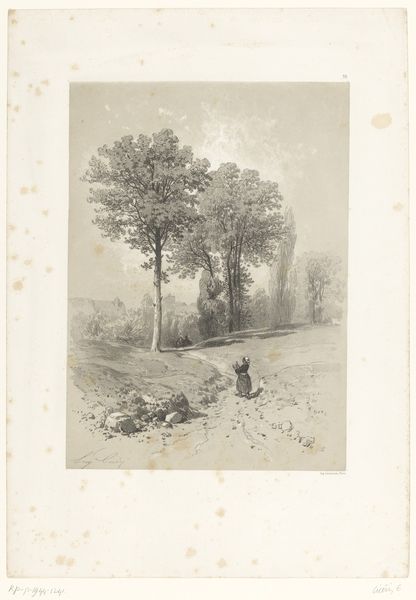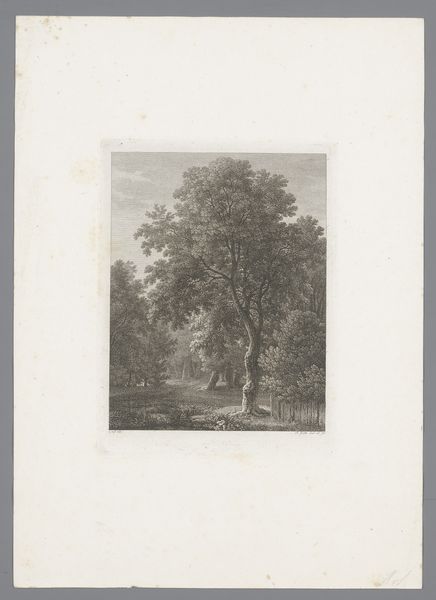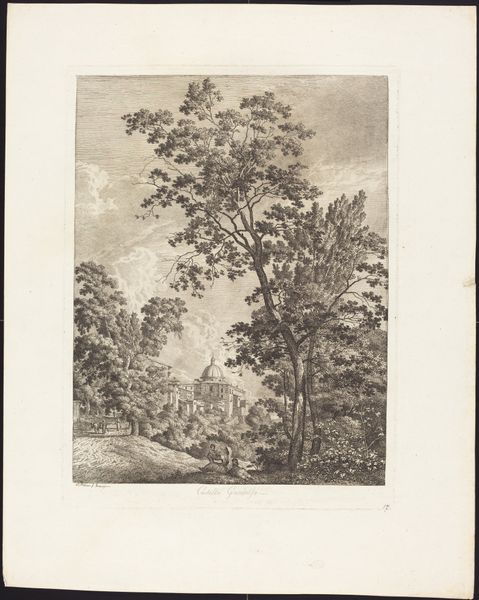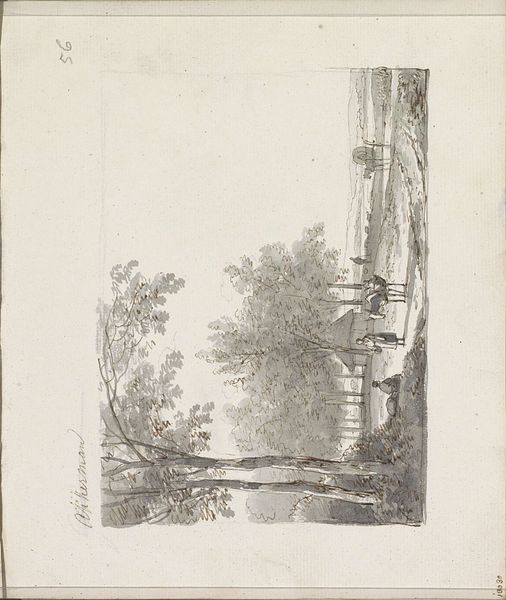
Herder met koeien in de schaduw van de bomen c. 1829 - 1852
0:00
0:00
jeanbaptistelouishubert
Rijksmuseum
drawing, pencil
#
drawing
#
landscape
#
romanticism
#
pencil
Dimensions: height 397 mm, width 285 mm
Copyright: Rijks Museum: Open Domain
Curator: Looking at "Herder met koeien in de schaduw van de bomen," or "Shepherd with Cows in the Shade of the Trees," a drawing crafted with pencil sometime between 1829 and 1852, it's amazing to observe Hubert’s control with such a simple medium. It’s currently held at the Rijksmuseum. Editor: My initial impression is one of peaceful stillness, almost a timeless quietude. The silvery greys of the pencil lend the whole scene an ethereal quality. Curator: It perfectly captures the Romantic era's idealized vision of rural life, but I also notice the artistic conventions typical of academic landscape. Notice how the building is positioned, not really as a key part of life, but rather secondary in the backdrop. This isn’t documentary as much as idyllic interpretation. Editor: Absolutely. The trees themselves seem to almost arch protectively over the scene, like silent guardians of this peaceful moment. It's the archetypal protective symbol, reminding us of nature's constancy and our need for shelter and rest. One is instantly transported into a realm where time ceases to exist. Curator: Yet, you could argue there's also a subtly political undercurrent. The elevated romanticized depiction of the working classes obscures labor and toil, subtly upholding existing power structures. It’s presenting a tamed view of nature. The focus of these artworks in prominent museums and galleries shapes a romanticised interpretation of our landscape’s history. Editor: That's a really astute point. But I also believe there's a more profound human desire being touched on here: a longing for connection with nature. It taps into our shared yearning for the harmony and belonging we once knew and seek again. The shepherd isn't just some pastoral figure, they embody our deepest relationship with the earth. Curator: Which becomes a political point, really. How did people find harmony and belonging on their lands? Who owned it, who could access its peace? In the absence of cows the title would have had a very different ring, probably just about landscape. In that addition it also reinforces how entwined rural folk's lives are with land control. Editor: So the image resonates, carrying layered cultural memories beyond that quiet pastoral moment? Curator: Exactly. The image's simplicity has far more cultural complexities than what one initially notices. Editor: I will certainly think twice next time about the deeper layers as opposed to first impressions!
Comments
No comments
Be the first to comment and join the conversation on the ultimate creative platform.
